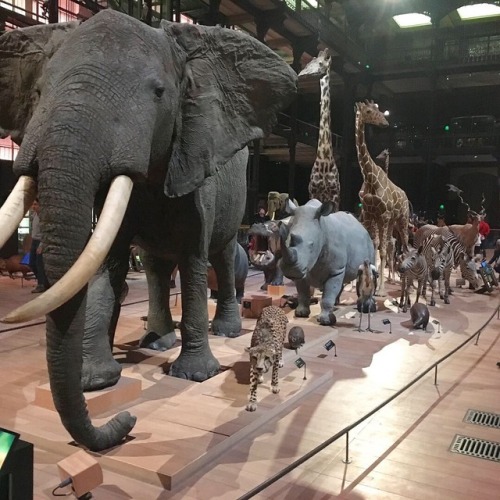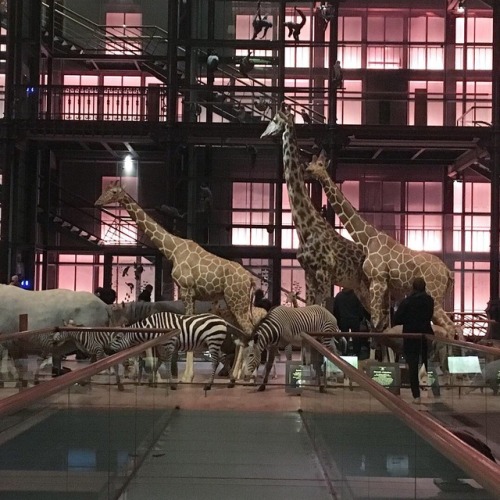Strolling amongst the parade of animals at the Muséum National d’Histoire Naturelle is
Strolling amongst the parade of animals at the Muséum National d’Histoire Naturelle is a state of awe. This beautifully designed spectacle is truly greater than the sum of it parts. Many of the animals individually were taxidermied in the 1800s or early 1900s. Though from a distance and in such a mass, our eyes are delighted. And, one has to marvel at the craftsmanship of a taxidermy specimen from 1850 still delighting the public today. That’s why I wanted to share some photos also of the ‘bad taxidermy’ from this museum and make a case for it. In museums such as this in the later 1800s, it was common for the preparator / taxidermist to have limited (if any) information about the animal. They were not the collector, usually not a biologist and certainly did not have access to google images or Wikipedia. They mostly likely had some illustrations and writings from field biologists— if they could track them down in the museum’s library. What they had to work with was typically a dried skin perhaps stuffed with straw and a cleaned skull with teeth. Everything had to be prepped in the field and sent along in crates as there was no refrigeration. Many times this would take months and there was no communication between the collectors and the taxidermist. So, while some pieces may have been done by a skilled naturalist / taxidermists like John Gould or Carl Akeley, most were done by confused museum employees doing their best with what they had. So, while the rest of the museum patrons see an ‘angry Hippo’ or a ‘bad Seal’, I get to walk through time. I see an 1800s taxidermist who heard terrifying stories about Hippo attacks. I see a very confused Parisian taxidermist from the early 1900s who was guessing about how flippers worked. (He guessed wrong, but A for effort.) And yes, I imagine future taxidermists, walking through museums, pondering my mistakes. -- source link
Tumblr Blog : preytaxidermy.tumblr.com
#taxidermy#taxidermie#taxidermist#museums#natural history#paris museums#sciece#biology#allismarkham#prey taxidermy







